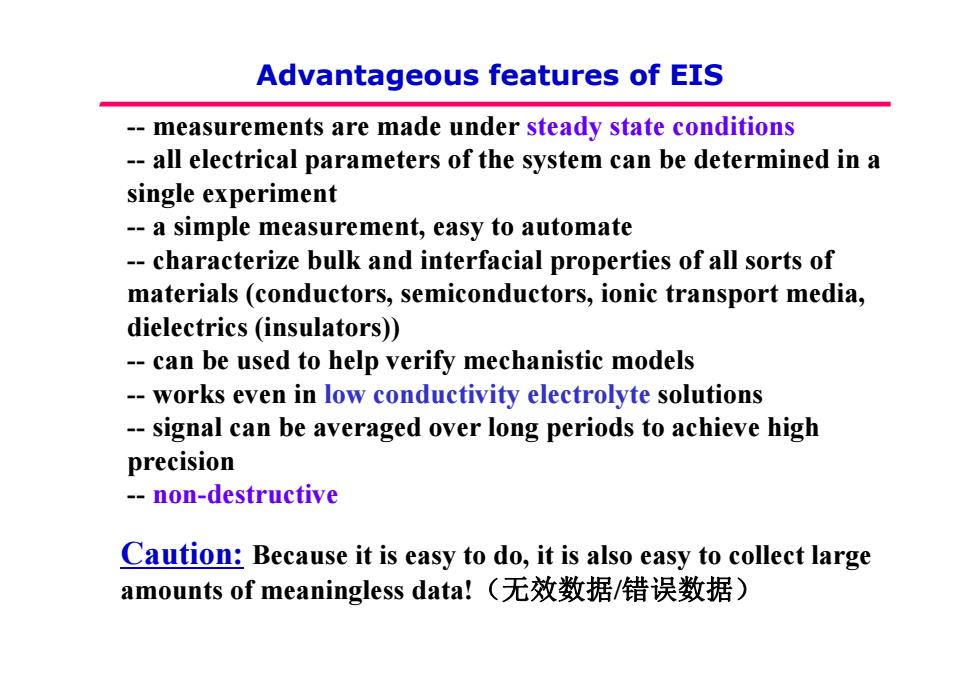
Advantageous features of EIS -measurements are made under steady state conditions -all electrical parameters of the system can be determined in a single experiment -a simple measurement,easy to automate -characterize bulk and interfacial properties of all sorts of materials(conductors,semiconductors,ionic transport media, dielectrics(insulators)) -can be used to help verify mechanistic models -works even in low conductivity electrolyte solutions -signal can be averaged over long periods to achieve high precision -non-destructive Caution:Because it is easy to do,it is also easy to collect large amounts of meaningless data!(无效数据/错误数据)
Advantageous features of EIS - measurements are made under steady state conditions - all electrical parameters of the system can be determined in a single e periment single e xperiment - a simple measurement, easy to automate - characterize bulk and interfacial properties of all sorts of characterize bulk and interfacial properties of all sorts of materials (conductors, semiconductors, ionic transport media, dielectrics (insulators)) - can be used to help verify mechanistic models - works even in low conductivity electrolyte solutions - signal can be averaged over long periods to achieve high signal can be averaged over long periods to achieve high precision - non -destructive Caution: Because it is easy to do, it is also easy to collect large amounts of il d ! f mean ing less data!(无效数据 /错误数据)
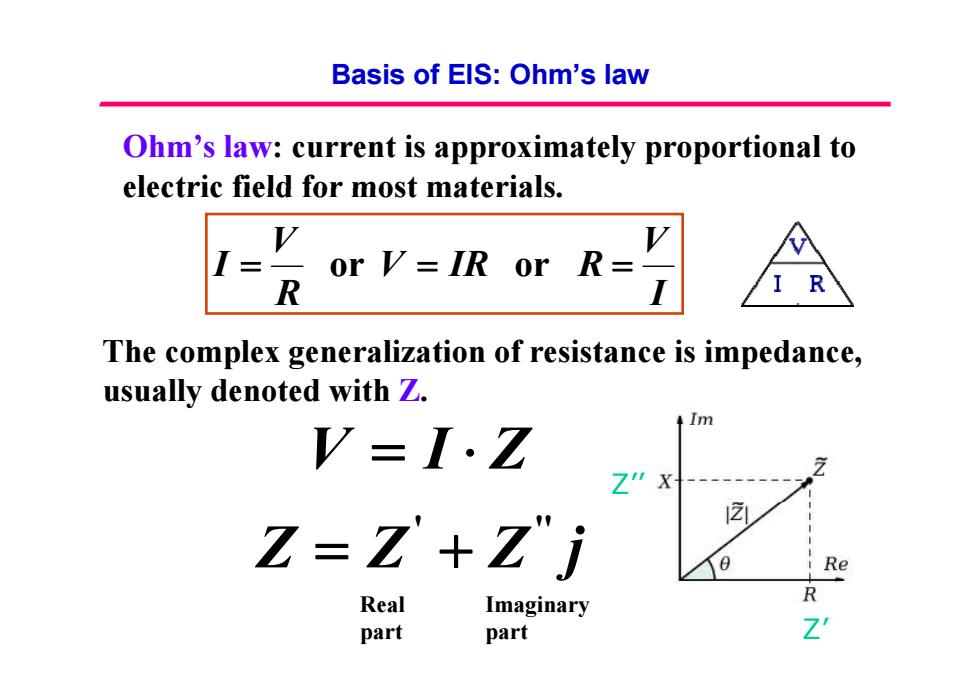
Basis of EIS:Ohm's law Ohm's law:current is approximately proportional to electric field for most materials. I= R or V=IR or R= I R The complex generalization of resistance is impedance, usually denoted with Z. Im V=I.Z X 2 Z-Z+7i Re Real R Imaginary part part Z
Basis of EIS: Ohm’s law Ohm’s law: current is approximately proportional to electric field for most materials electric field for most materials . V V IR R V I or or Th l li ti f i t i i d I V IR R R I or or The comp lex generalization o f res i s tance is impe dance, usually denoted with Z . V I Z Z’’ Z Z Z j ' '' Real part Imaginary part Z’
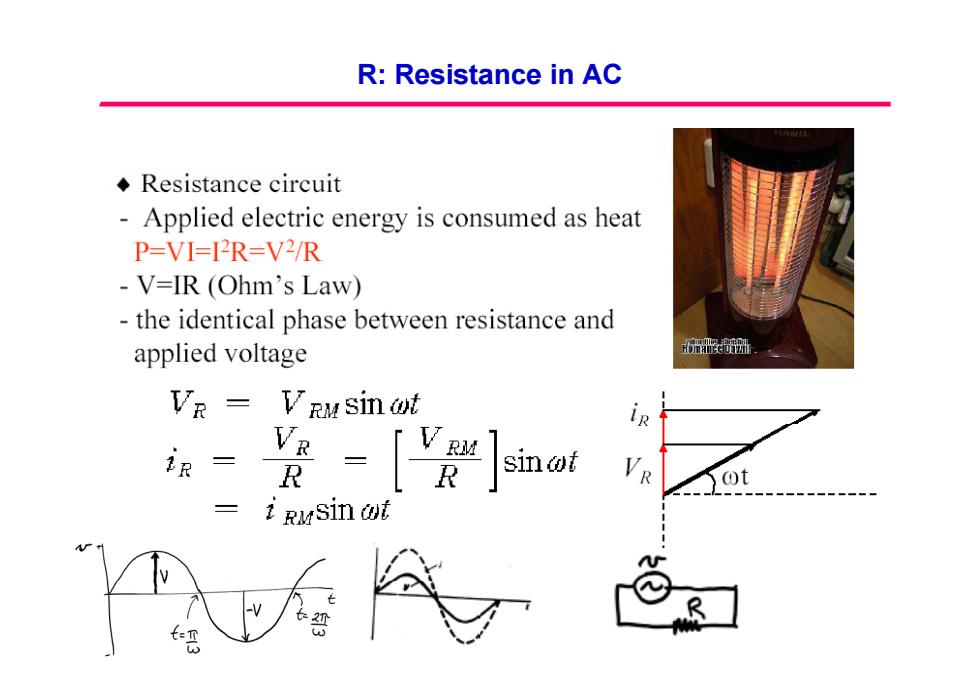
R:Resistance in AC ◆Resistance circuit Applied electric energy is consumed as heat P=VI=I2R=V2/R V=IR (Ohm's Law) the identical phase between resistance and applied voltage 布e班 VR Vrusinot V V助 R sinat VR -1 RuSin ot
R: Resistance in AC
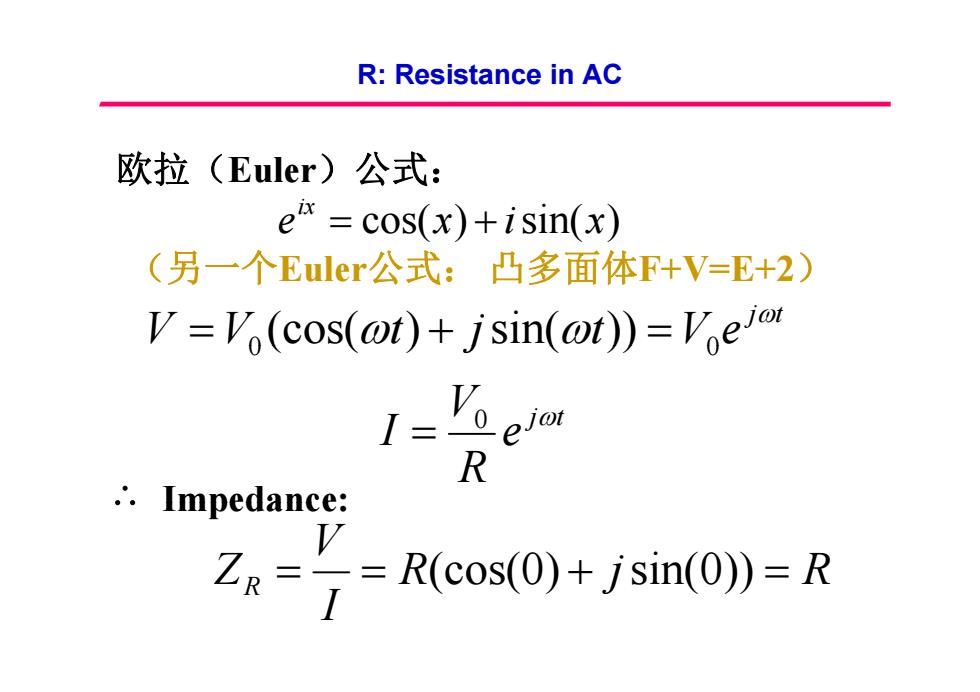
R:Resistance in AC 欧拉(Euler)公式: e=cos(x)+isin(x) (另一个Euler公式:凸多面体F+V=E+2) V=Vo(cos(@t)+jsin(@t))=Ve R ∴.Impedance: V Zg==R(cos(0)+jsin(0))=R
R: Resistance in AC 欧拉(Euler)公式: e cos(x) isin(x) ix (另 个一 Euler公式: 凸多面体F+V=E+2 F+V=E+2) j t V V t j t V e 0 0 0 (cos( ) jsin( )) 0 ( ( ) ( )) V j t I 0 jt e R I 0 Impedance: R j R V ZR R(cos(0) jsin(0)) R I ZR (cos(0) sin(0))
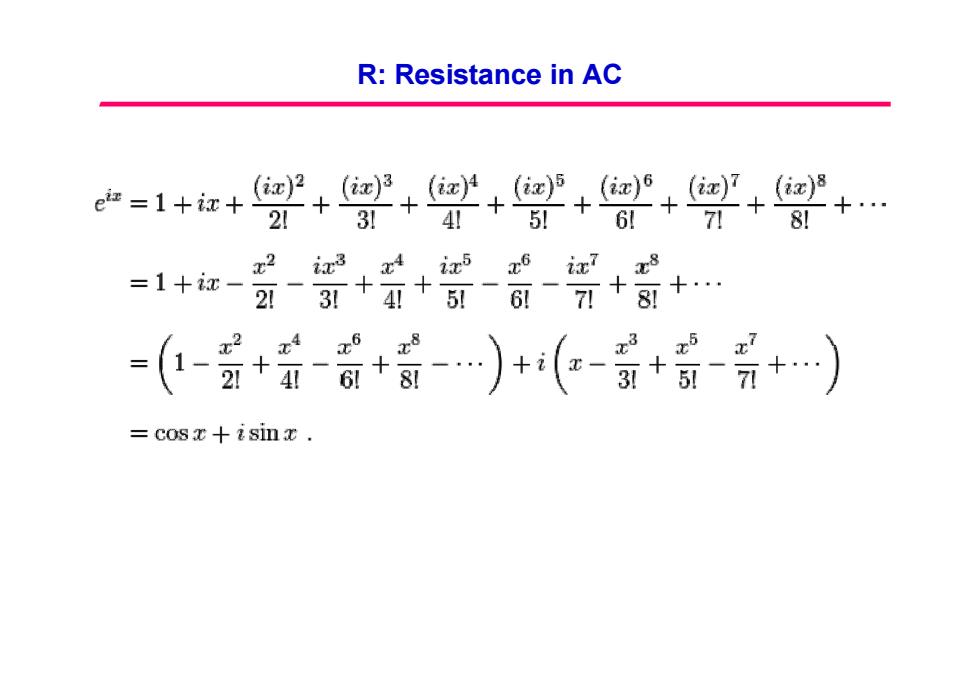
R:Resistance in AC e证=1+x+ +++++++ 21 311 4!51 61 7列 =1+ic- x2 ix3 xi ix5 x6 ix7 x8 2-31+4+5-6-71+8+. =(-豆+-+萄)+(-+罗-员+.) =c0sx十&simx
R: Resistance in AC